Introduction
What is a grape root borer?
The grape root borer, Vitacea polistiformis (Harris), is an insect pest native to the Eastern U. S. At the present time it has not been reported anywhere else in the world. Adult grape root borer moths mimic the appearance of the Polistes or paper wasps. The larvae of this clear winged moth feed on the mature roots of all grape species and hybrids. An infestation of grape root borer is not immediately apparent. In southeastern Pennsylvania it takes years for the borer to reach a population level that causes economic damage. Once the number of larvae reach a sufficient level the damage is striking. Within four years the production of one cultivar in our vineyard in Lancaster, Pennsylvania was reduced 70%. This level of damage occurred twenty years after the vines were initially planted. Many vineyardists are unaware of the serious problems that can result from grape root borer. Many new plantings of grape vines have occurred throughout the eastern U.S. in areas where grapes were previously not grown in any quantity.
Distribution of GRB
The exact range of the grape root borer throughout the Eastern U.S. is unknown. Not all areas have been tested. Only the state of Ohio is known to have done statewide testing. 1
The moth has been captured as far west as Arkansas and Missouri and as far north as Leelanau County in Michigan. Extensive damage occurs in the South and into the state of Florida.
Throughout their range grape root borers are present everywhere, although in low numbers. They have been captured and observed in the city of Lancaster, Pennsylvania where no grapevines are present. In central Georgia, moths were captured in swamps, forests, open lands, pastures and cultivated crops without the presence of vineyards or wild grapevines. 2
Other food sources, besides grape roots, must sustain larvae in these locations. Grape root borers become established in a new vineyard by chance. They cannot locate grapevines by any sense. 3 Eggs are laid indiscriminately over several days as the female walks and flies short distances. Once grape root borers are present in a vineyard, a perfect, unlimited food source is available that can lead to a dramatic increase in numbers.
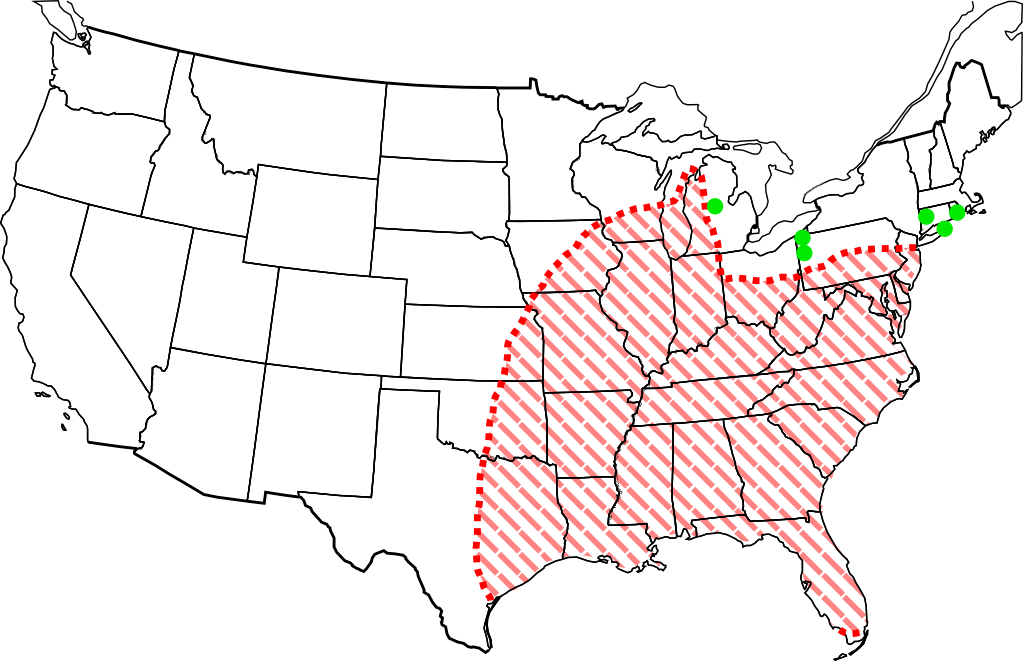
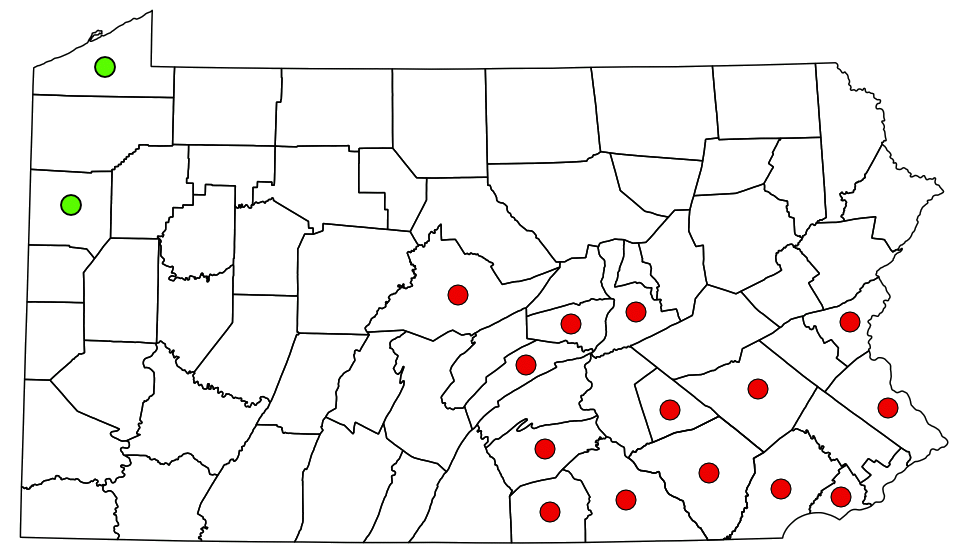
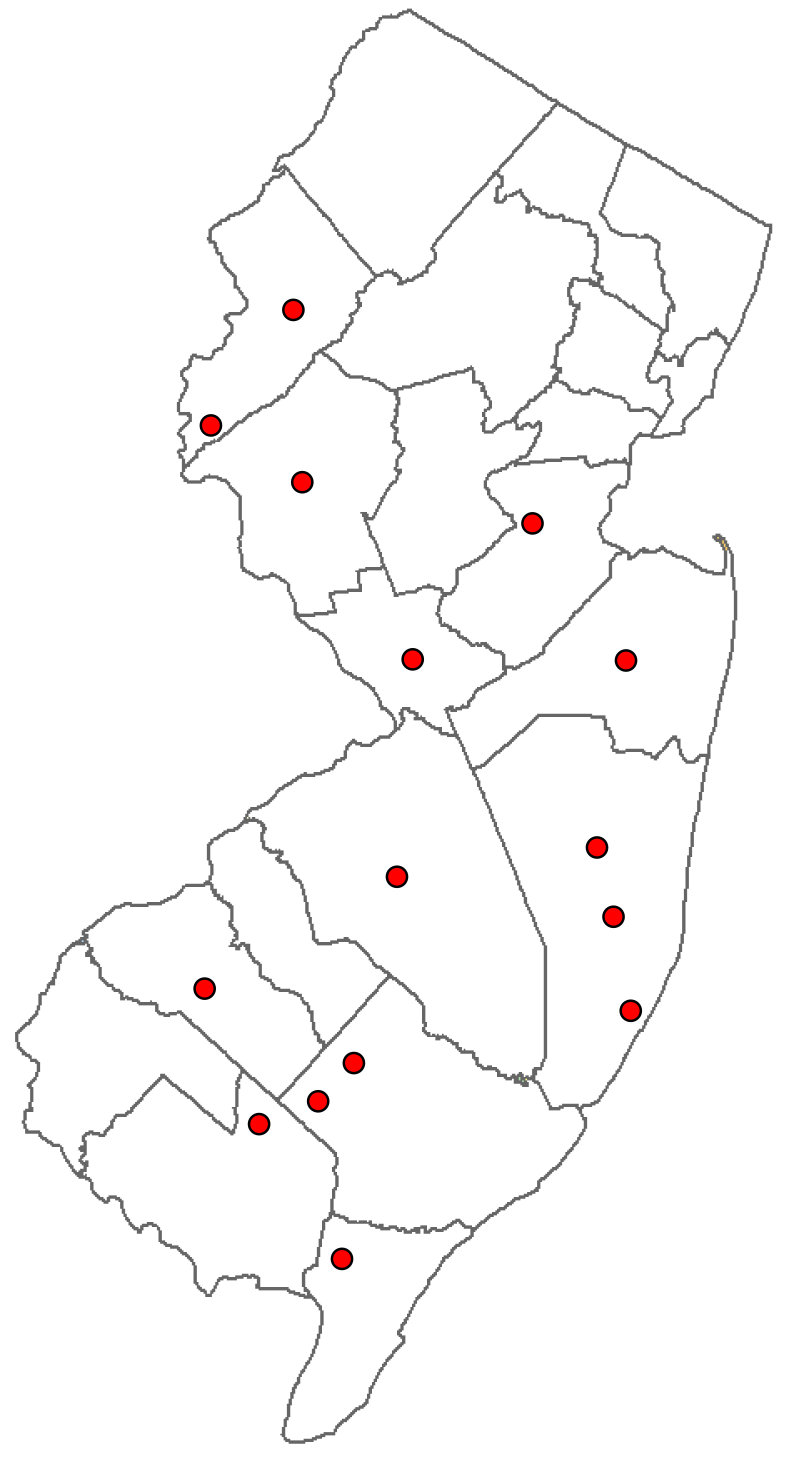
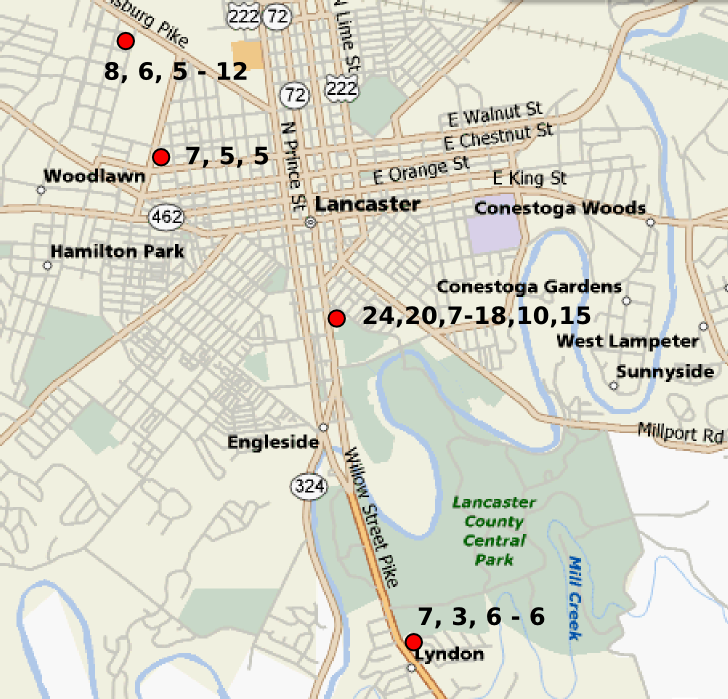
Vine Damage
It is often stated that low temperatures or winter cold injury is the number one factor limiting grape production in the northern U.S. If grape root borers are present, arguably they are the number one problem that leads to the death of French hybrid grapevines. In our vineyard, 25% of the chambourcin vines have died since planting in 1980 and many others are in a weakened state. All deaths are attributable to grape root borers and not winter damage, even though the lowest recorded temperature during that period has been -17°F.
Low numbers of grape root borer larvae can cause extensive damage and the eventual death of a vine. Grape root borer larvae eat the roots of all grapes: hybids, vinifera, rootstocks and native American varieties. Often the visible symptoms above ground are mistaken for nutrient deficiencies or cold injury. One mature larva can girdle 6% of a trunk base that has an average diameter of 2.75 inches and this would result in a 47% reduction in yield. 4
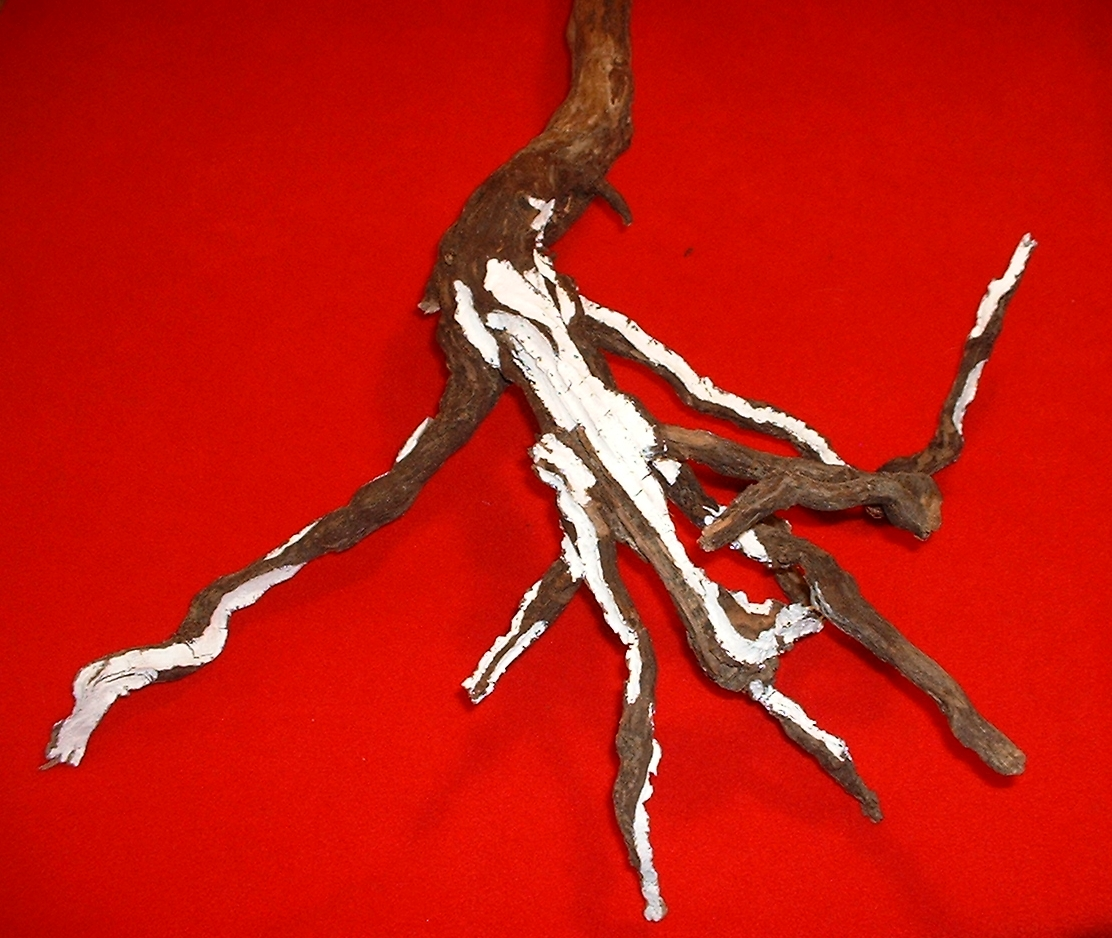
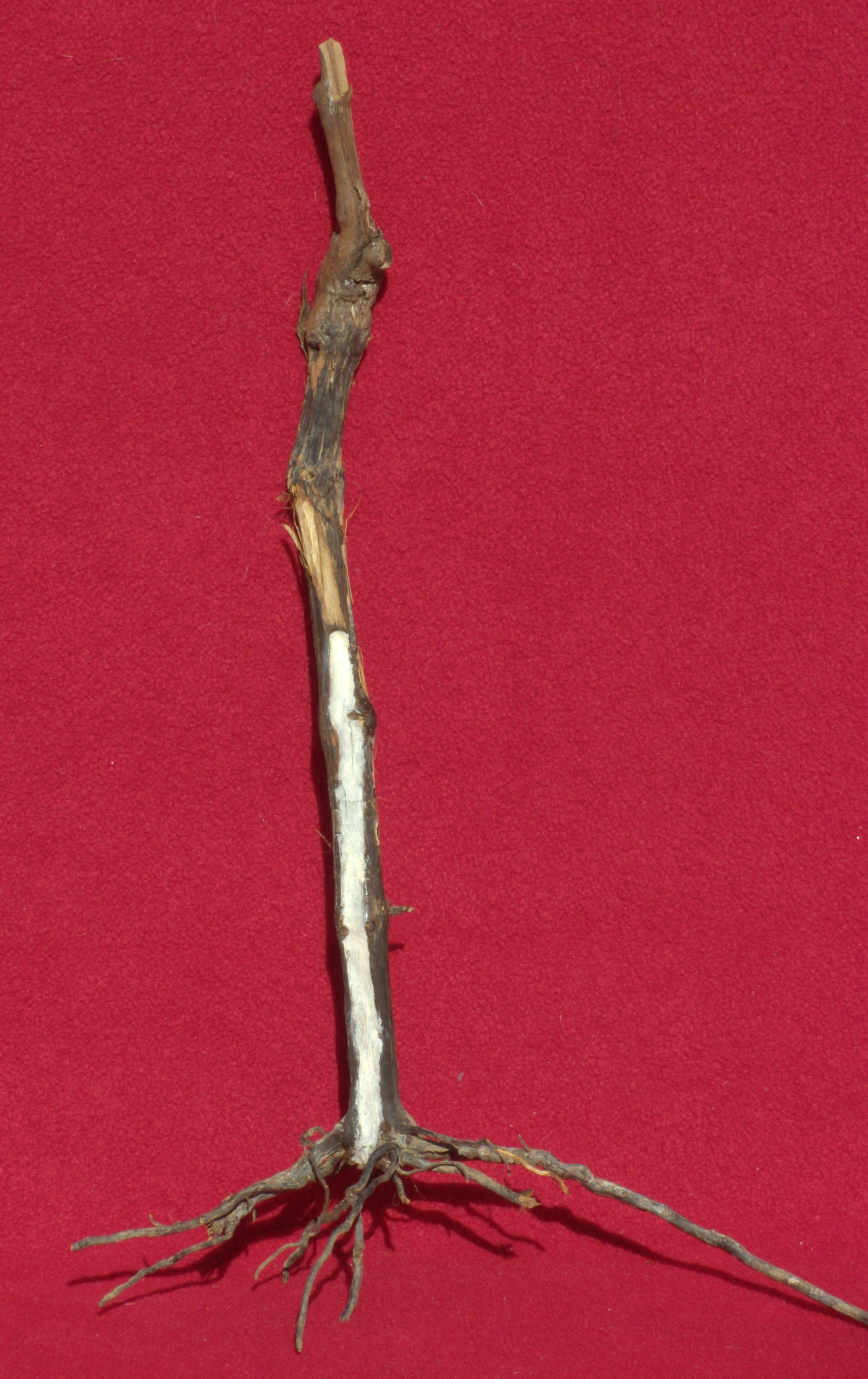
Life History
The life cycle of grape root borers make them difficult to control. In southeastern Pennsylvania, adults usually begin to emerge about the 1st of July and continue to emerge into mid or late August. The peak time for emergence of males is usually in mid-July. Adult moths live about 1 to 2 weeks and do not consume any food. Insecticides commonly used in the vineyard have no effect on grape root borer populations. Adult grape root borers are present in the vineyard at the same time as Japanese beetles, but are not affected by the sprays. The moths are most active in the afternoon and mating also occurs during this time. Male moths are most commonly seen flying about the vineyard. Females are usually sitting in vines or vegetation in the vineyard and fly sporadically. Consequently few females are observed as compared to males, although the number of males to females is usually equal. 5
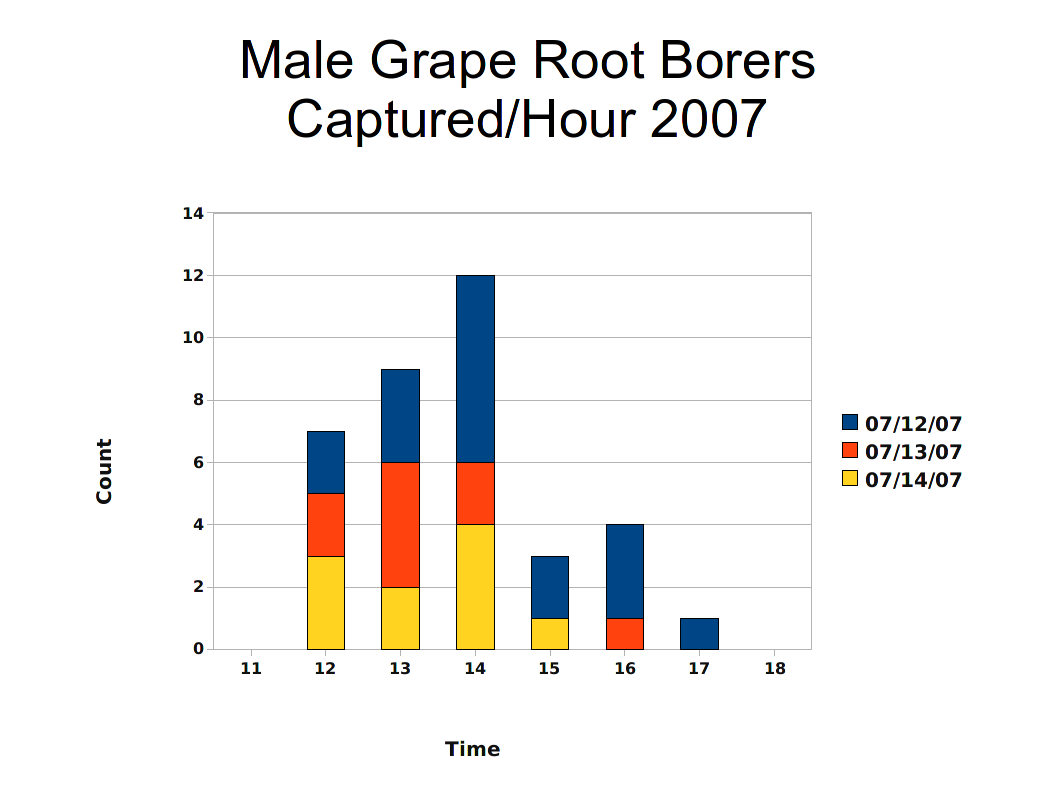
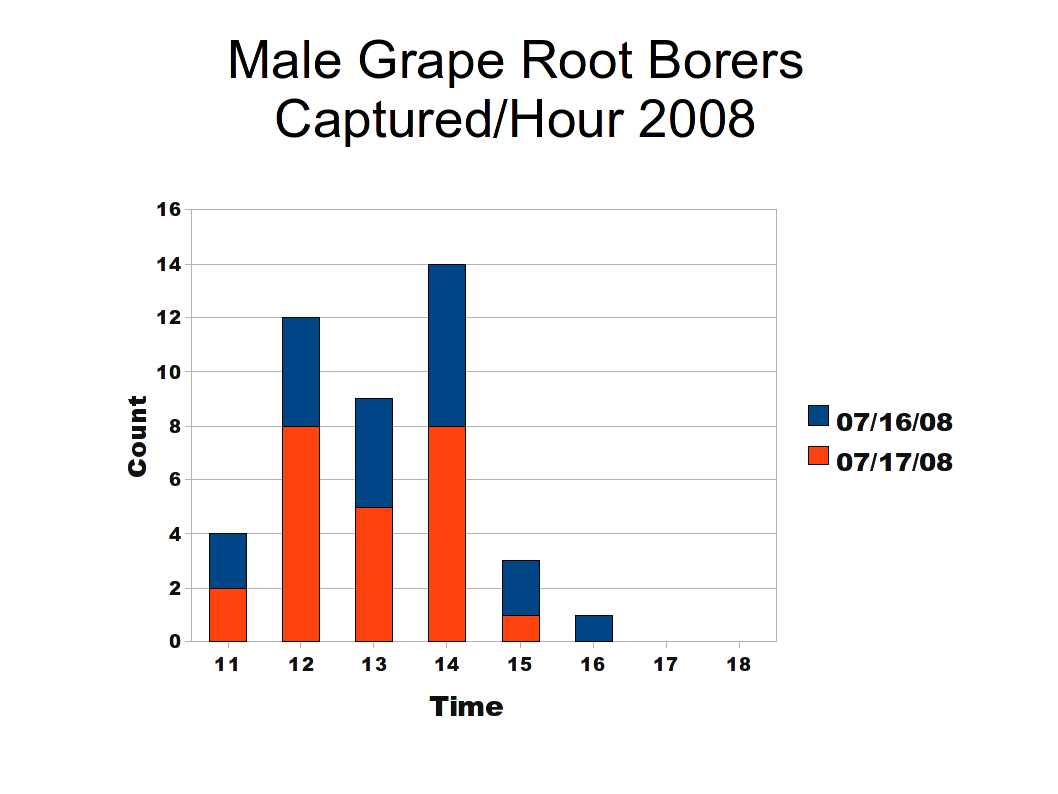
After mating, the female lays about 300 to 600 eggs over a period of several days. About half of the eggs are laid the day after mating. 6 The female moves slowly about laying the eggs singly or in very small groups. Eggs are deposited in many locations as the female walks and flies short distances. After two to three weeks the eggs hatch and the small larvae quickly enter the soil.
Eggs and newly hatched larvae have a fairly high mortality rate. Of the eggs that hatch only 1.5 to 2.7% of the larvae survive to infest grape roots. 7 The larvae must find suitable roots to feed on. The newly hatched larvae are capable of going through 9 to 11 inches of soil to find roots. 8 9 As soil moisture decreases, the mortality rate of the larvae increases. 10 Once the larvae are feeding on grape roots they become nearly impossible to control. The survival rate of the larvae when feeding on grape roots is 95%. 11 Larvae can migrate from root to root. In Georgia larvae were found to feed on roots down to 31 inches below the surface, but the average depth was 5.65 inches. 12 13 In our vineyard in Pennsylvania extensive damage has been found from several inches to a foot below the surface.
Larvae feed on the roots for one, two or three years. In northern areas of their range, most of the larvae pupate after two years in the ground. Some emerge within one year, while others take up to three years. In southern areas more emerge in the first year. Larvae move to within 2 inches of the soil surface, close to the trunk of the vine when they are ready to pupate. In Georgia 90% of the pupae were found within 14 inches of the trunk. 14
Similar results were seen in Missouri. 15 Larvae enter the pupal stage four to six weeks before emergence as adults.

It is often assumed that weeds and grass located under the vine row will increase the number of viable grape root borer larvae, because of a more favorable habitat for the newly emerged larvae. In a six year study done at Missouri State University, no significant difference in adult grape root borer emergence was found between a totally vegetation free vineyard, a 3 foot bare strip under the vines, a bark mulch, a hay mulch or grass and weeds under the vines. In the same study, the use of drip irrigation did not significantly increase the number of grape root borers. 16
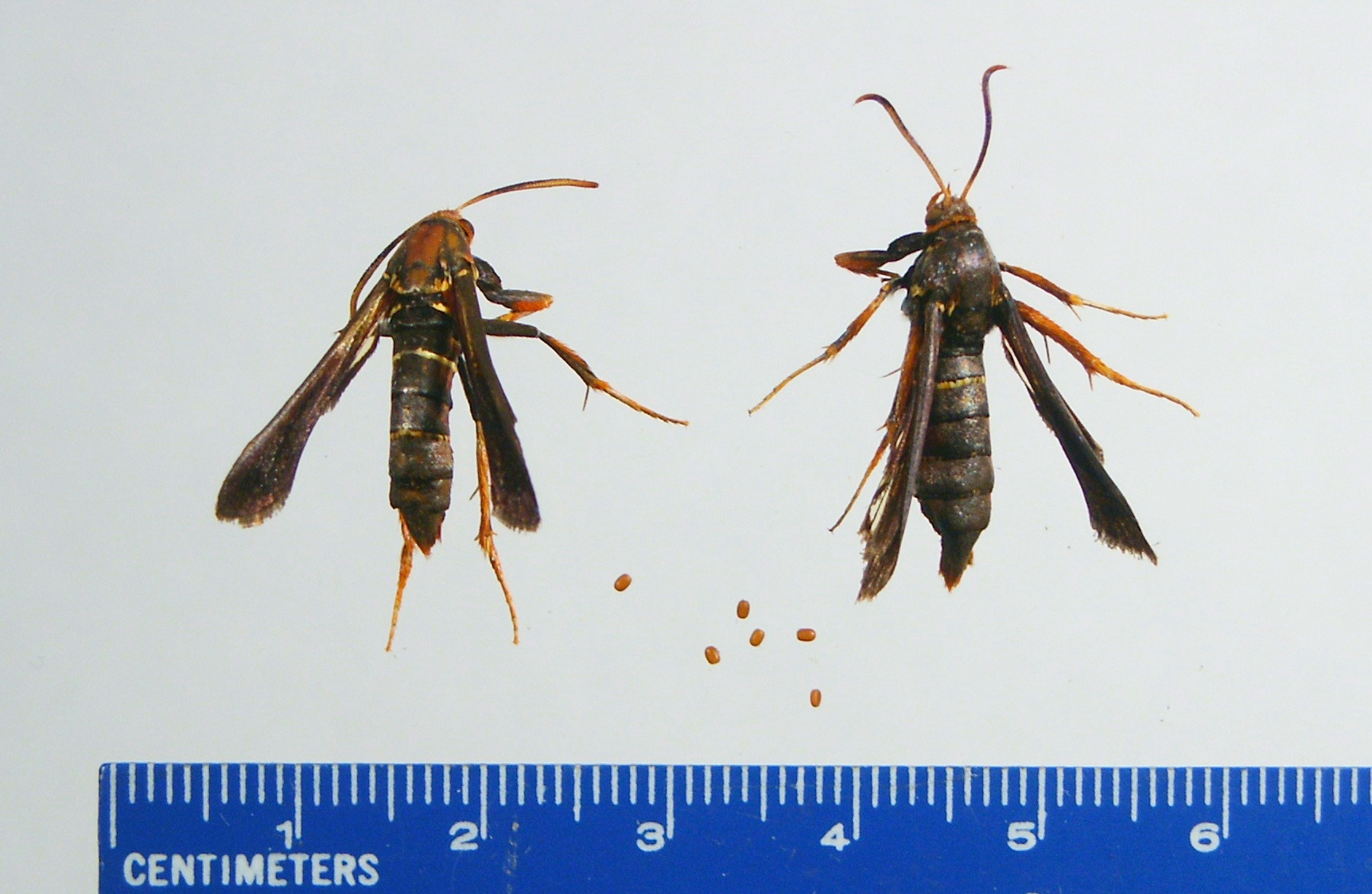
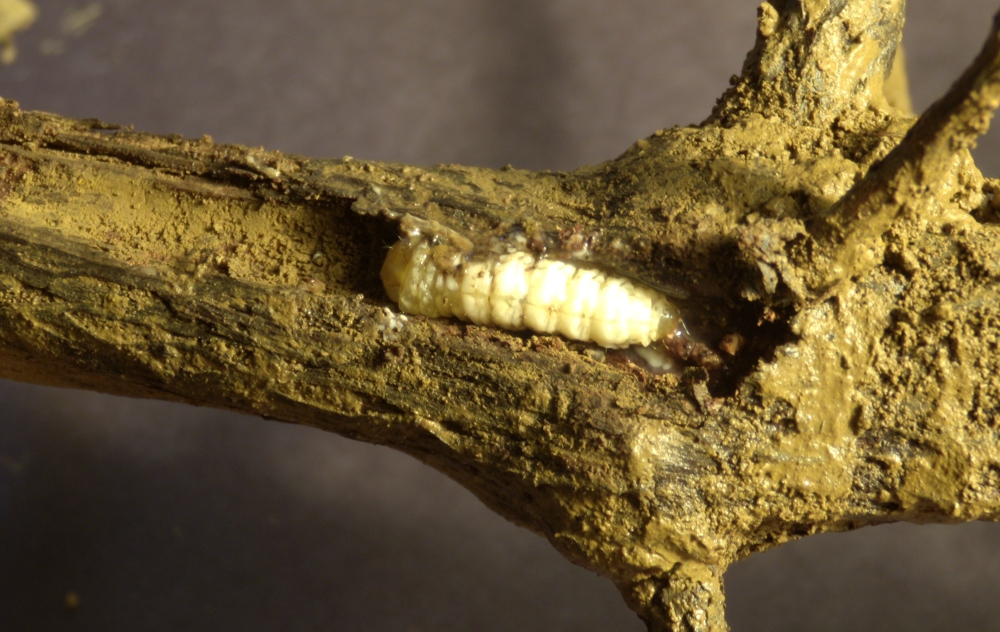
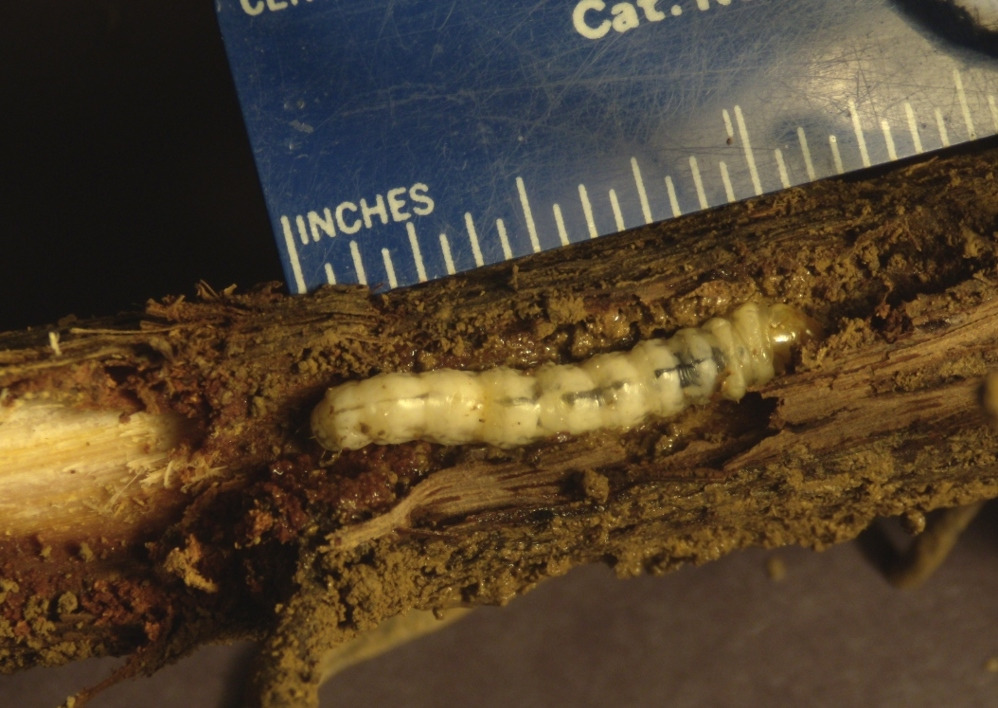
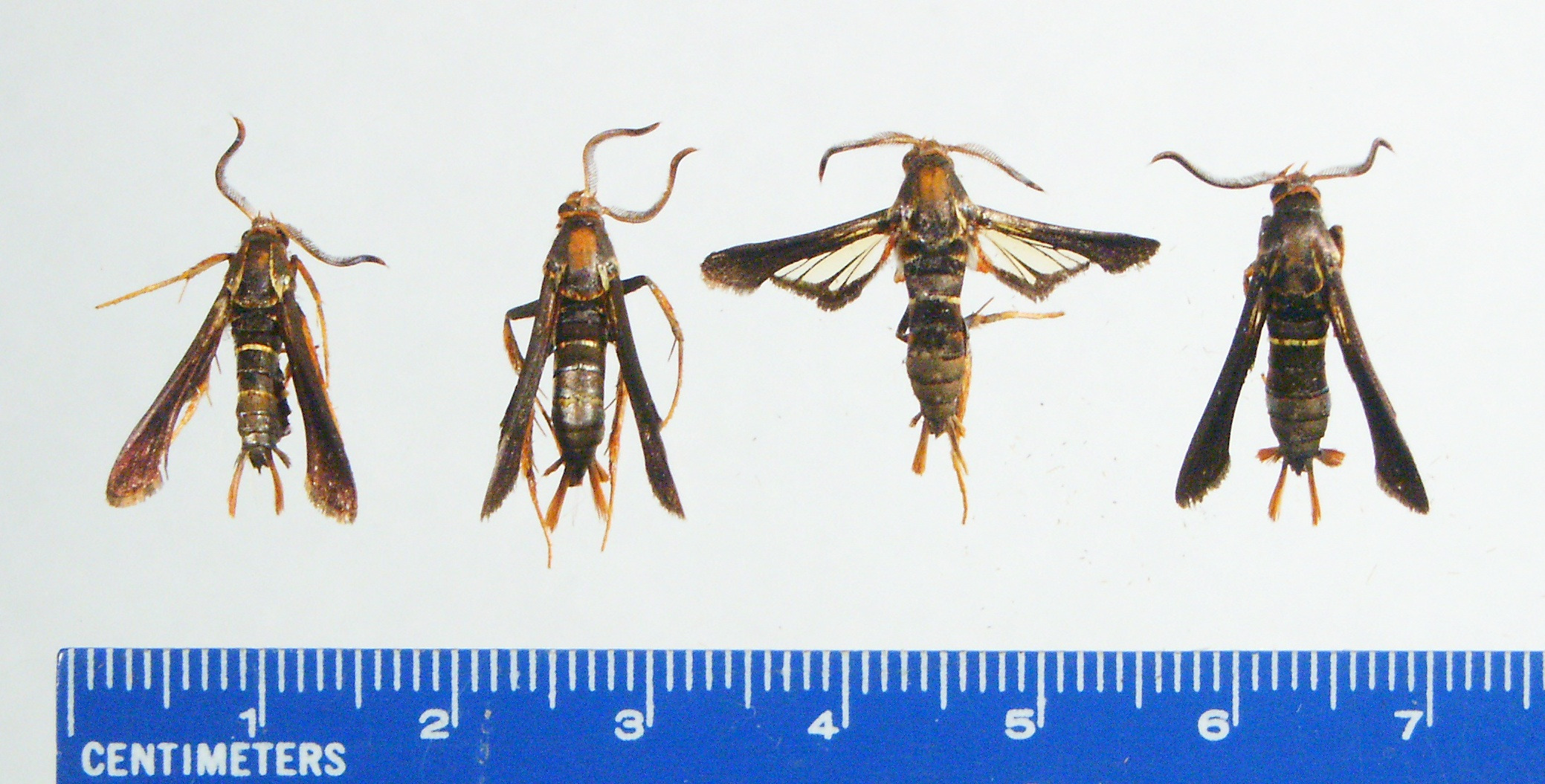
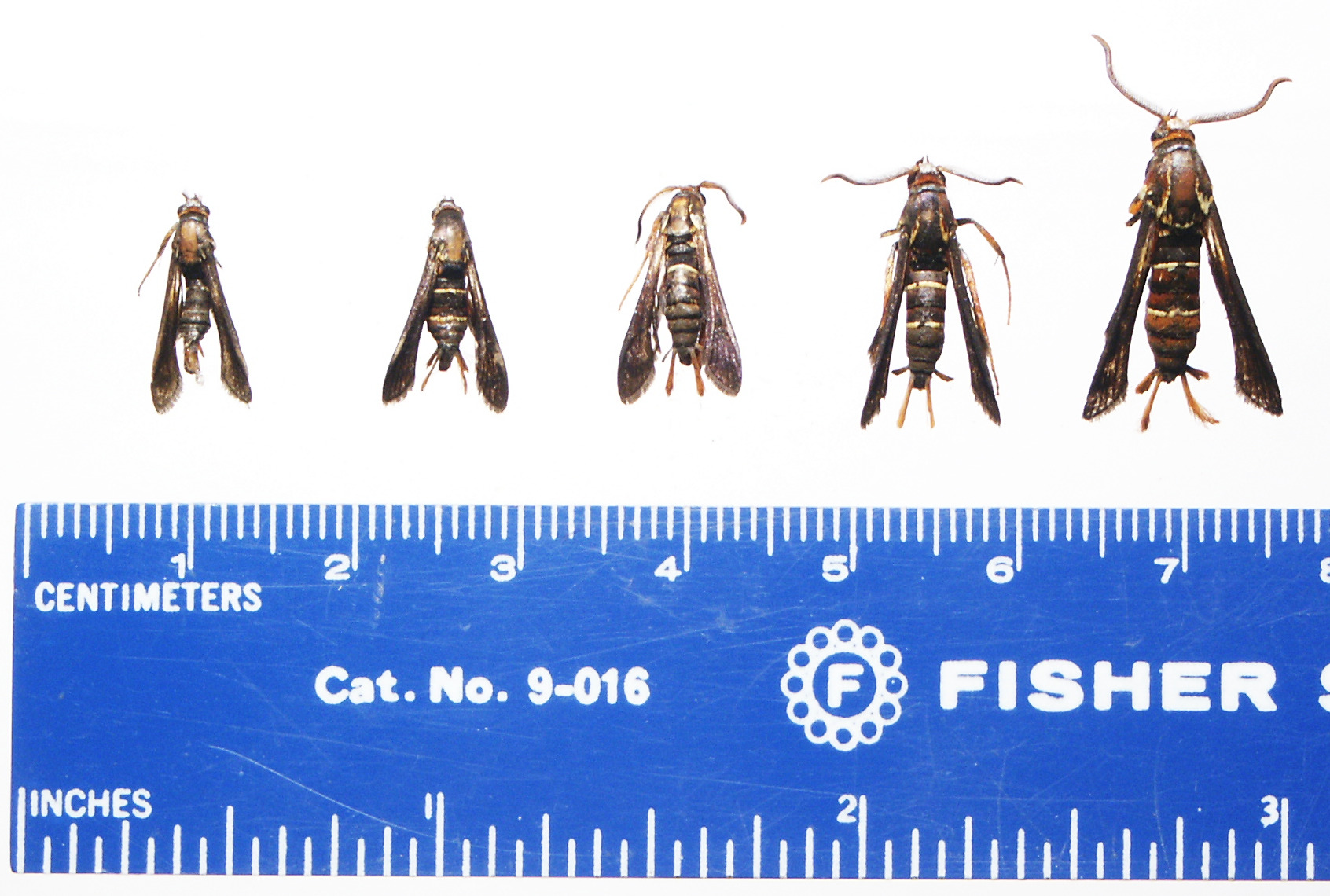
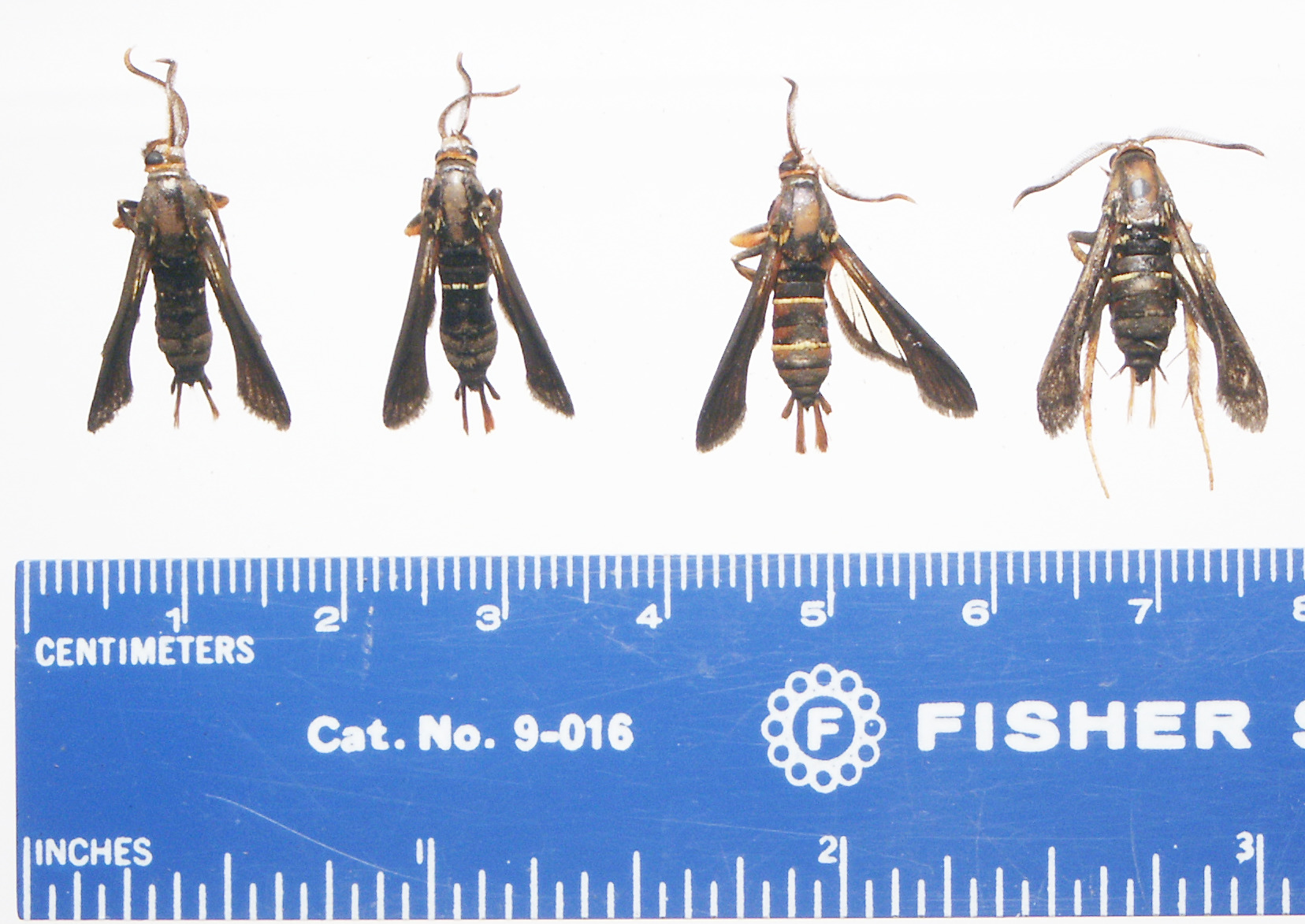
Pheromones
The female grape root borer uses a scent (pheromone) to attract males. This was first reported in 1918. 17 The major chemical component (E,Z-2,13-octadecadien-1-ol acetate or EZ) of the pheromone was identified in 1983. 18 A secondary compound (Z,Z-3,13-octadecadien-1-ol acetate or ZZ) was found to improve the capture rate of male moths by 7 times in 1987, but the compound has not been identified in the female grape root borer pheromone. 19 The blend of pheromones used commercially today is a 99:1 ratio of EZ:ZZ.
The exact chemical makeup of the female grape root borer pheromone has not been identified. Observation of male grape root borers around commercially available pheromone lures finds they often fly in close proximity to traps containing a lure but do not enter the trap and many times fly away.
Alm, S. R., R. N. Williams, D. M. Pavuk, J. W. Snow, and M. A. Heinlein. 1989. Distribution and seasonal flight activity of male grape root borers (Lepidoptera: Sesiidae) in Ohio. J. Econ. Entomol. 82(6): 1604-1608.↩︎
Snow, J. W., M. Schwarz, and T. D. Eichlin. 1989. Captures of clearwing moths (Lepidoptera: Sesiidae) with various octadecadienyl acetates and alcohols in central Georgia in 1983-1985. Environ. Entomol. 18(2):216-222.↩︎
Pritchard, P. M. 2004. Reproductive capacity of grape root borer, Vitacea polistiformis (Harris), and Implications for pheromone based management. Ph. D. dissertation, North Carolina State University, Raleigh.↩︎
Dutcher, J. D., and J. N. All. 1979. Damage Impact of Larval Feeding by the Grape Root Borer in a Commercial Concord Grape Vineyard. J. Econ. Entom. 72:159-161.↩︎
Townsend, H. C., and S. Micinski. 1981. 1981 Grape root borer research. Proc. Arkansas State Hort. Soc. 102:154-157.↩︎
Dutcher, J. D., and J. N. All. 1978. Reproductive behavior of Vitacea polistiformis Harris. J. Georgia Entomol. Soc. 13(1):59-63.↩︎
Dutcher, J. D., and J. N. All. 1979. Biology and control of the grape root borer in Concord grape vineyards. Georgia Agric. Exp. Sta. Res. Bull. 232:3-18.↩︎
Brooks, F. E. 1907. The grape-vine root-borer. West Virginia Agric. Exp. Sta. Bull. 110:16-30.↩︎
Brooks, F. E. 1918. Papers on deciduous fruit insects: II. The grape root borer. U.S. Dept. of Agric. Bull. 730:1-28.↩︎
Sarai, D. S. 1972. Seasonal history and effect of soil moisture on mortality of newly hatched larvae of the grape root borer in southern Missouri. J. Econ. Entomol. 65:182-184.↩︎
Dutcher, J. D., and J. N. All. 1978. Survivorship of the grape root borer in commercial grape vineyards with contrasting cultural practices. J. Econ. Entomol. 72:751-754.↩︎
All, J. N., and J. D. Dutcher. 1977. Subsurface and surface insecticide applications to control subterranean larvae of the grape root borer. J. Econ. Entomol. 70:649-652.↩︎
All, J. N., and J. D. Dutcher. 1978. Current status of grape root borer infestations in Georgia: promising control methods. Georgia Agric. Res. 19(4):17-20.↩︎
Dutcher, J. D., and J. N. All. 1979. Biology and control of the grape root borer in Concord grape vineyards. Georgia Agric. Exp. Sta. Res. Bull. 232:3-18.↩︎
Townsend, H. G. 1980. Grape insect research. Proc. Arkansas State Hort. Soc. 101:107-110.↩︎
Townsend Jr., H. G. 1991. The effect of drip irrigation and ground cover on the grape root borer. 1991 Annual report of research funded by the Missouri grape and wine development program. Southwest Missouri State University. pp. 60-65.↩︎
Brooks, F. E. 1918. Papers on deciduous fruit insects: II. The grape root borer. U.S. Dept. of Agric. Bull. 730:1-28.↩︎
Schwarz, M., J. A. Klun, B. A. Leonhardt, and D. T. Johnson. 1983. (E,Z)-2,13 octadecadien-1-ol acetate. A new pheromone structure for sesiid moths. Tetrahedron Letters 24: 1007-10.↩︎
Snow, J. W., M. Schwarz, and J. A. Klun. 1987. The attraction of the grape root borer, Vitacea polistiformis (Harris) (Lepidoptera: Sesiidae) to (E,Z)-2,13 octadecadienyl acetate and the effects of related isomers on attraction. J. Entomol. Sci. 22(4): 371-374.↩︎